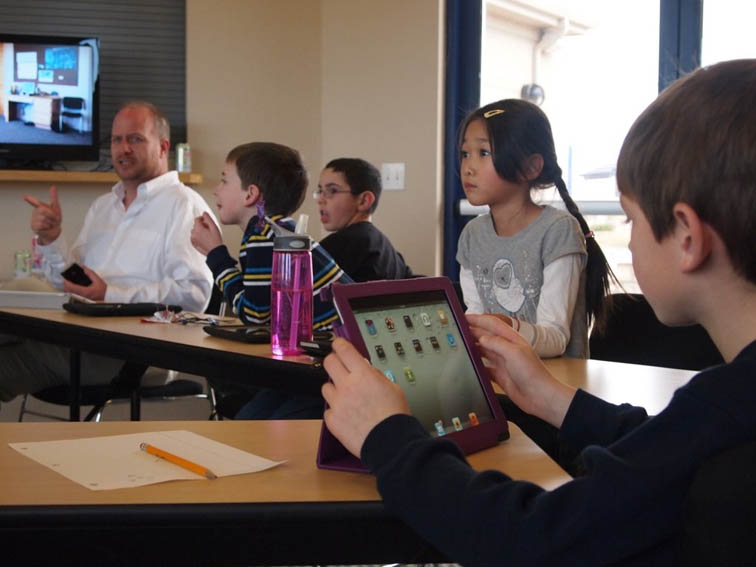
It seems so simple, doesn’t it? Designing a creative space in your classroom will promote student creativity.
However, many classrooms are far from being labelled as ‘creative spaces’. Schools in general have developed into very industrial places. You can feel the difference as soon you walk into the building. The difference between a creative space and a workspace can have a definite impact on how your students behave.
Getting Started
So, what do you value? You’ll need to start by figuring that out. If your students’ actions are going to be influenced by their environment, then it’s an important question to ponder. An environment that supports ‘neat, tidy, organized, straight lines’ is going to look different from one that supports ‘teamwork, relationships, community’. While certain values may be found in both cases, it is your main focus that helps determine the layout and look of a room.
A good place to start would be to imagine your goal; what would your ideal class look like to someone peeking in the doorway? What would your students be doing, and how would it appear? Once you can see it, then choose the first few words or phrases that would be used to describe your goal environment. Those words will be your starting point.
Now that you have defined the type of environment that you are working towards, how do you get there? You can’t just arrange the desks in a new pattern and call it a day. You’ll have to use a bit more mental prowess than that!
Creativity is an important trait to develop in our students. It is even one of the most useful skills that has been pinpointed for 21st century success. Creating a classroom environment that supports creativity can go a long way towards helping students take control out of their teacher’s hands and direct their own learning. If creativity isn’t one of the words you originally came up with, you may want to consider adding it in!
Questions To Frame Your Thinking
What does an environment need to be like in order to promote creativity?
What does it need to have, and how should it be arranged? Luckily, there isn’t only one right answer. A creative environment can be as unique as you are!
Imagine you were given a room in your home and an unlimited budget (the type of budget a classroom teacher could only dream of). Then, you were told that you needed to create a space for yourself. The space needed to be somewhere you could do your work and create plans for your class, as well as relax and learn (maybe with some PD on Twitter…).
What would you create? Probably not a desk in the middle of the room, surrounded by grey walls and industrial lighting, with windows that don’t open and an old cork-board outlined with used-up rainbow borders. At least, I would hope you could do better than that!
The Illusion Of Classroom Management
While you may not be able to do anything about the type of windows in your classroom, you can certainly make the rest of your space work for you and your students. If you want teamwork, then group the desks to support that. Sure, students will start out by trying to talk more than you would like, but they will learn to tame themselves if you are persistent with your class management and rules. It’s easier to separate desks in order to keep silence in class, but that isn’t really teaching any skills – it’s more like avoiding the issue.
As for the walls, it has been fairly well documented that any posters that stay up for more than two weeks are no longer noticed by students. I suppose a popular reference poster may be able to overcome this statistic, but most classroom decor will fall prey to student indifference quickly enough. If you don’t have time to update the posters, then making it a student job can help keep the posters and messages relevant and read.
What I Did
In my own class, I opted to buy a $7.00 roll of background paper for bulletin boards that featured rippled water, as well as one that showed a field/forest/mountain scene. It was amazing what this small change did for the room! Half our classroom was forest, while the other half was a beach. Owl accents highlighted the forest side, while seashells and fish adorned the beach side.
Our ‘reading corner’ was separated by shelves like a cave along the beach, where students could sit on mats or a large beanbag to read. It certainly blew the ‘industrial’ atmosphere right out the window – and for very little overall cost as well!
At the end of the day, you and your students spend many hours per week in that one room. It should be welcoming, fun, inspiring, and educational. When someone steps into your classroom they should enjoy being there – YOU should enjoy being there! Most of all, your students should enjoy being there.
Conclusion
Anyone who has spent any length of time working in a cubicle (I personally have, it was grey, with grey carpet and beige walls) can tell you about how ‘inspiring’ that atmosphere can be. But then again, it isn’t supposed to inspire you, it’s really just supposed to allow you to focus on your work without being distracted by anything in your bland environment. Is that really what we want for our students?
If not, then we need to reconsider the industrial look in many classrooms. If you have certain students who benefit from a more ‘quiet’ environment, set up a corner of the room designated for that. When they need it, they will go there.
As the new school year approaches, so does a new chance to create. How will your classroom look next year?
Image attribution flickr user flickeringbrad
